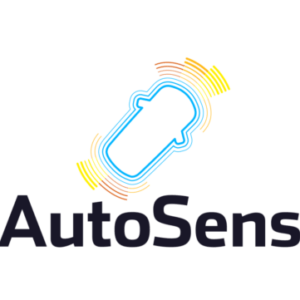Jenny Campbell B. Rust, our Senior Content Manager, visited the Seeing Machines headquarters in Canberra for an exclusive behind-the-scenes look at their cutting-edge driver and occupant monitoring technology. Join her as she explores how Seeing Machines is driving the future of automotive safety.
After the excitement of AutoSens China 2024, I was fortunate to spend a few weeks in Australia, which included a fascinating visit to the Seeing Machines headquarters in Canberra, where the company was kind enough to host me and offer a glimpse into their innovative work. A vibrant mural welcomes visitors at the entrance, and I was greeted with a warm smile by Sophie Nicoll, VP of Corporate Communications who has been with the company for 8 years. “It wasn’t like this when I started”, she jokes in response to a remark on the scale of the facilities as we wait for Dr Mike Lenné to join us. Mike is the company’s Chief Science & Innovation Officer, as well as an Advisory Board member for the team here at InCabin. A global authority on human factors and safety, Mike boasts 25 years of experience improving transport safety across all modes. Formerly a Professor at Monash University Accident Research Centre, he now leads Seeing Machines’ Innovation group, driving advanced research, feature development, and technology strategy. We shake hands in greeting before setting off through the corridors, and as we walk through their calm, minimalistic space, I could sense a quiet buzz of activity. Despite the serenity, it was evident that the team was deeply engaged in cutting-edge projects that drive their mission forward, and everyone I spoke to was deeply passionate about the work they were doing there.
Who are Seeing Machines?
For those who aren’t already familiar, Seeing Machines is a global leader in driver and occupant monitoring technology, leveraging advanced algorithms to enhance vehicle safety and occupant awareness. Their systems detect and interpret critical data about drivers and passengers, helping automotive OEMs meet safety standards and improve user experiences.
The highlight of my visit was a live demonstration showcasing their innovative technology. Their advanced Driver Monitoring System has been expertly crafted to maintain the fidelity of driver information while also expanding its capabilities to monitor the entire cabin —a feat they are, quite rightly, proud of. The system can detect eye and face occlusion, such as drivers wearing sunglasses or masks, as well as monitoring seatbelt usage, facial movements like talking or yawning, and even behaviors such as smoking. By tracking attention sharing and distraction through sophisticated algorithms, the system provides a comprehensive picture of driver behaviour, aligning with EuroNCAP’s evolving requirements. The cabin-monitoring aspect of the system extends its capabilities to all occupants, enabling the detection of a child’s presence, improper restraint use, and situations that may require airbag deployment. This expansion into passenger monitoring ensures that the vehicle can gather vital data to enhance overall safety. One application of the DMS technology is, uniquely, built into the rearview mirror, an attractive design for OEMs because of its seamless integration — particularly in vehicles where space is at a premium. Additionally, the system features a wireframe model that tracks mirror movement to ensure alignment with the vehicle with differing drivers, accounting for movement of the mirror and allowing for simple and quick camera recalibration.
During the demonstration, I was particularly struck by the visual tools that accompanied the technology. Gaze detection was represented with blue lines indicating line of sight, while stick-figure models overlaying the camera image identified key markers to illustrate posture, offering a clear visualization of the system’s capabilities. The company’s technological advancements are impressive; their monocular depth estimation technology emulates 3D sensing using a single 2D camera, eliminating the need for time-of-flight (ToF) sensors that would increase costs.
Seeing Machines invests heavily in research and development, with a dedicated team of 60 innovation focused scientists and engineers out of a total workforce of over 400 spread across Melbourne and Canberra in Australia, Europe, USA, UK and Japan. Their expertise in Human Factors is evident, underpinned by over 20 years of research and an academic approach unrivalled within the industry. The company collaborates closely with strategic automotive Tier 1 customers including Magna and Valeo to define specifications and compute requirements for OEMs, ensuring that their products are seamlessly integrated and operate at an optimum level. They also gather data through both in-house simulators, and naturalistic data through their aftermarket product (Guardian) partnerships with a range of transport & logistics organisations like Daimler, further enriching their research. Shortly after this visit, they announced a collaborative partnership with Mitsubishi Electric Mobility Corporation, who have purchased a 19.9% stake in the company.
Industry Leadership
Seeing Machines plays a significant role in shaping industry standards. My guide Mike Lenné serves on the NCAP Occupant Status Monitoring Working Group alongside leaders from companies like Tobii, CorrActions, Cipia, and Smart Eye. Seeing Machines’ influence is evident in their collaborations with major automakers such as GM and Ford, where their technology contributes to advancements in automotive safety.
Challenges and Focus Areas
Speaking with Mike after the demo, I asked what he thought would be the most significant challenge for Seeing Machines in the upcoming years. He identified an approach of increasing the capabilities of the single-sensor to extend even further, to detect impaired driving caused by factors such as illness or substance use. While other approaches incorporate multiple modalities, cost remains a critical factor for OEM adoption, and Seeing Machines recognises the importance of keeping costs minimal, and remains committed to delivering high-quality, cost-effective solutions through ongoing research and innovation.
Future Opportunities
The visit to Seeing Machines was both inspiring and enlightening, highlighting their pivotal role in shaping the future of vehicle safety and occupant awareness. Despite a turbulent period for the automotive Industry as a whole, I came away feeling positive that companies like Seeing Machines are working diligently and ethically towards a future of zero road fatalities and accessible transport for all.
Interested in exterior sensing technology?
With a pass to InCabin USA, you’ll also get full access to our co-located sister event, AutoSens. See the speaker line-up for AutoSens here >>


